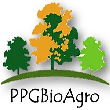Banca de DEFESA: ROSELINE DA SILVA MELO
Uma banca de DEFESA de MESTRADO foi cadastrada pelo programa.DISCENTE : ROSELINE DA SILVA MELO
DATA : 24/02/2023
HORA: 08:00
LOCAL: meet.google.com/owb-zfia-reb
TÍTULO:
EXTRACTS OF Apeiba tibourbou Aubl. IN THE CONTROL OF Atta sexdens L. (HYMENOPTERA: FORMICIDAE).PALAVRAS-CHAVES:
Leaf-cutting ants, pente de macaco, plant insecticides, secondary metabolites.
PÁGINAS: 65
GRANDE ÁREA: Ciências Agrárias
ÁREA: Recursos Florestais e Engenharia Florestal
SUBÁREA: Silvicultura
ESPECIALIDADE: Proteção Florestal
RESUMO:
The use of compounds derived from plants can be a promising strategy for the control of leaf-cutting ants and other insect pests, providing opportunities for the discovery of new molecules that degrade more quickly, control more selectively and cause less damage to the environment. This insecticidal action of botanical species is due to the production of secondary metabolites that can cause death or adverse effects on insect pests. The species Apeiba tibourbou Aubl. belonging to the Malvaceae family, it is popularly known in Brazil as pente-de-macaco. And according to preliminary studies it can be promising as an insecticide, being a possible alternative to control leaf-cutting ants. The objective of this study was to analyze the insecticidal potential of different extracts and their fractions of Apeiba tibourbou in the control of Atta sexdens L workers. The experiment was carried out in a completely randomized experimental design, with 10 repetitions (the experimental unit consisted of ten ants). . The study was carried out by the contact and ingestion method using the crude extract of the leaf and bark and also fractioning it into chloroform, ethyl acetate and hexane fractions in concentrations of: 0.25; 0.5; 0.75 and 1%. In the contact bioassay, topical application of 0.2 ml of the crude extract and the fractions obtained with the aid of a spray bottle was performed on the worker ants. In the ingestion bioassay, the crude extract and the fractions obtained at the same concentrations as in the contact bioassay were incorporated into the diet. The control was used to evaluate the survival of the ants with reference to temperature, humidity, handling and solvent effect. The flasks containing the ants were kept in a B.O.D. type climatized chamber at 26 ± 2°C, and a 12-hour photophase. The evaluations occurred by quantifying the number of dead ants every 24 hours. After the analyzes carried out, the corrected mortalities averages showed efficiency above 90% for the crude extract of the bark and the leaf in a period of 144 hours. The chloroform and ethyl acetate fractions showed superior insecticidal activity to control Atta sexdens, differing from the hexane fraction. It was observed that higher concentrations are more efficient in killing ants, causing a reduction in the number of live ants in the experiment. Based on the results of this study, the species Apeiba tibourbou showed insecticidal potential, being promising for the development of new studies and products to control Atta sexdens.
MEMBROS DA BANCA:
Interno - 253817001 - JULIANA GARLET
Interno - 253995001 - VINICIUS AUGUSTO MORAIS
Externo à Instituição - Caciara Gonzatto Maciel - UFRGS
Externo à Instituição - JARDEL BOSCARDIN - UFU



